Christianity
Early Christianity
The four Gospels of Matthew, Mark, Luke and John in the New Testament record the Birth, Life, Ministry, Death, Resurrection and Ascension of Jesus Christ, the Son of God.
The Life and Times of Jesus were also documented by Roman, Jewish and Greek historians.
Christianity originated with the Ministry of Jesus Christ in 30 AD as He went about Judea to preach the Gospel of God.
Jesus chose Twelve Disciples (followers) to symbolize the 12 Tribes of Israel from the beginning of His Baptism by John the Baptist in the River Jordan to be witnesses to His Life, Teachings, Miracles, and finally His Death, Resurrection and Ascension which ended His Ministry on earth in Jerusalem.
“Follow Me and I Will Make You Fishers of Men.”
-(Matthew 4:19)
Christian Faith
Jesus Christ offered people deliverance from their sins:
*They were to repent of their past sins
*Put their trust in Him
*Be baptized into His Church
The Great Commission
The Great Commission laid the foundation for evangelism (the spreading of the Christian Gospel).
God started the Great Commission when He sent His Son, Jesus Christ to re-make this world through faith, love and humility.
Forty days after Jesus Christ's Resurrection on the Mount of Olives, outside Jerusalem and, in the presence of eleven of his Disciples, He endowed them to become Apostles (Greek word meaning “ones sent forth”) as recorded in Matthew. 28:19-20: “Therefore, go and make disciples of all the nations, baptizing them in the name of the Father and the Son and the Holy Spirit. And surely, I am with you always, to the very end of the age.”
- Matthew 28:19
Christian Foundation
Christianity took on a new life and strength after Jesus Christ Died on the Cross on Friday April 3, 33 A.D and was Resurrected three days later.
Without the Resurrection, there would be no Apostolic foundation for the Christian church.
His Resurrection proved that death is not the end but rather, the Gateway to everlasting life in God's Heavenly Kingdom.
From the Christian foundation of ancient Jerusalem, the Apostles traveled throughout the Greek-speaking, eastern half of the Roman Empire, (Greece, Asia Minor, portions of North Africa and the Middle East) establishing Christian communities.
The integration of the Greco-Roman period helped to spread Christianity throughout the Roman Empire which began to break away from its Jewish origins.
The early Christian Church was established after much suffering and martyrdom as many Christians were beaten, stoned to death, thrown to the lions, tortured and crucified.
Lazarus of Bethany
After the Resurrection of Christ, Lazarus was forced to flee Judea because of plots on his life.
He went to Cyprus with his two sisters Mary and Martha where he was ordained by Saint Paul and Barnabas, a Cypriot Jew who was named an Apostle in Acts 14:14 as the first Bishop of Kition (present-day Larnaca).
Lazarus lived for thirty more years and was buried for a second time beneath the church of Ayios Lazarus in Larnaca.
His sarcophagus was inscribed with: “Lazarus four days dead and friend of Christ”.
Christianity
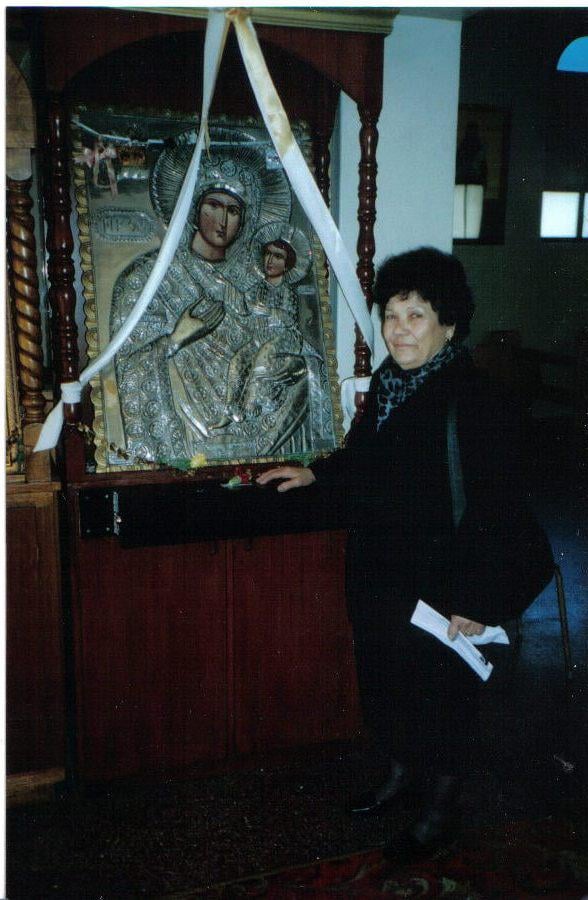
Christianity is the only religion where its Founder, Jesus Christ is in fact, the Son of God.
Christianity gives humanity their greatest asset - Faith in God and Jesus Christ!
Christianity takes its name from the Greek word "Christ" meaning "Anointed One" (with the Blessing of God).
Christianity has a religious continuity with Judaism, the ancient spiritual heritage of the Jews.
Christianity believes in one God who created Heaven and the universe and, upon the Life, Miracles and Teachings of Jesus Christ the Good Shepherd, Who came to lead His flock to greener pastures.
Christianity gives humanity a reason to life in this world and in the everlasting life to come in God's Heavenly Kingdom.
Apostolic Era
The Apostolic Era are the years following Jesus until the death of the last of the Twelve Apostles.
Of the Twelve Apostles, eleven of them were martyred.
Saint John the Evangelist outlived the remaining Apostles who died of old age rather than by martyrdom.
All of the Apostles suffered greatly because of their proclamation of Jesus Christ and their denial to worship pagan gods.
Saint Paul - Apostle to the Gentiles
Saint Paul, one of the most important figures of Christian History made an impact as an Apostle, Theologian, and as a Letter-writer of the Apostolic Age (33 AD – 100 AD).
Although Saint Paul was not one of the original Apostles during the Ministry of Jesus, he is considered "the Apostle of the Gentiles" (non-Jew) for his mission to spread the Gospel to all people.
Saint Paul's original name was Saul and he grew up in a strict Jewish family in the port city of Tarsus, a Greek speaking town in Asia Minor that was under Roman occupation.
His conversion to Christianity occurred after Jesus' Crucifixion - his spiritual awakening was sudden and dramatic.
Saul was a passionate persecutor of early Christians and regarded Jesus as a threat to Pharisaic Judaism.
He was present at the persecution and martyrdom of Saint Stephen and soon after this, was sent to Damascus to help suppress Christianity there (AD 33).
While traveling on the road from Jerusalem to Damascus a sudden light from heaven flashed around him and he was brought to repentance by an appearance of the Resurrected Image of Jesus before him.
He fell to the ground and heard a Voice say to him, "Saul, Saul, why do you persecute me?" "I am Jesus, whom you are persecuting."
Saul was temporarily blinded but, on regaining his sight, his life totally changed - he realized that Jesus is indeed, the Son of God.
He was baptized a Christian and then changed his Hebrew name of Saul to the Greek name Paul.
Saint Paul became the greatest missionary to preach the Gospel to the Gentiles.
His desire was for all people to gain spiritual awareness.
By 100 AD, over 40 Christian churches were established and Saint Paul's Gentile doctrine would change the course of Christianity from a small sect of Judaism that ultimately, became a world faith with many Christian denominations.
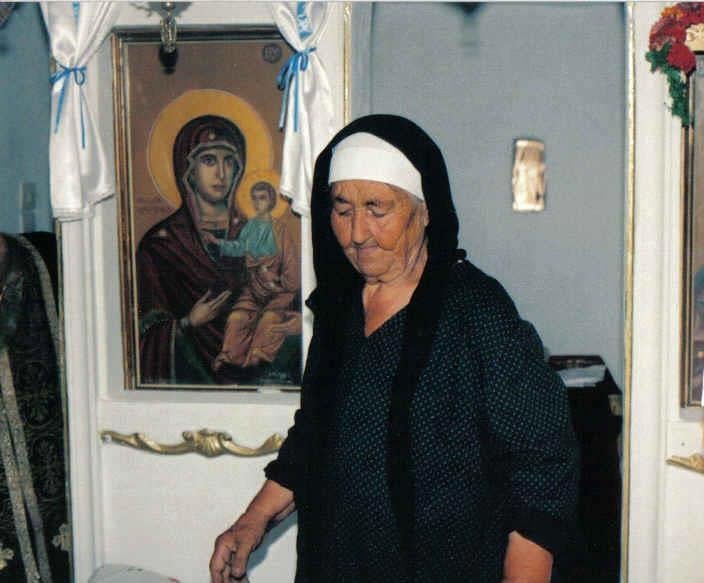
The Eastern Orthodox Church
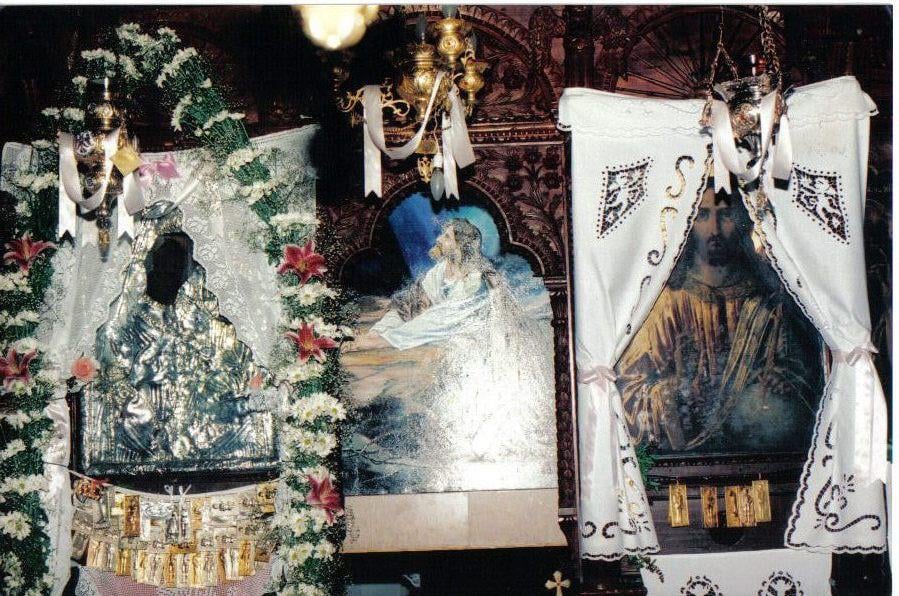
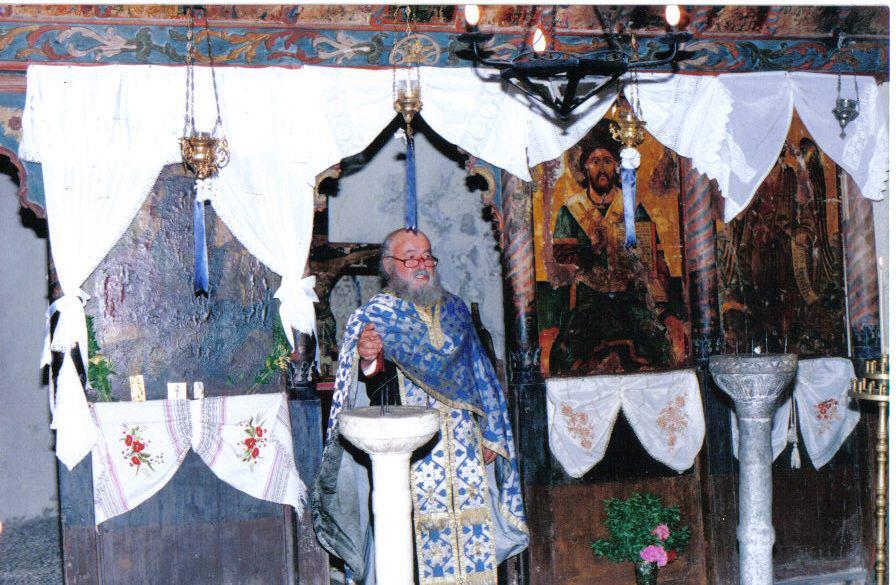
"Orthodox" comes from the Greek words orthos ('right') and doxa ('belief') which means correct belief or right thinking.
The Eastern Orthodox Church traces its history back to the Apostolic Age (33 - 100 AD).
Orthodox Christianity believes in the apostolic succession that they believe was established by the Apostles in the New Testament.
The Apostles appointed successors, known as bishops, and they in turn appointed other bishops in a process known as Apostolic succession.
The original Christian Church trace their bishops back to the five early patriarchates of Alexandria, Jerusalem, Constantinople, Antioch and Rome
They were established to organize the Christian world.
The 5 Christian Churches
Four of the ancient Greek Patriarchates remain Orthodox today despite being taken over by Muslims.
The Eastern Orthodox churches of Jerusalem, Antioch, Alexandria and Constantinople are the most ancient Christian churches in existence today.
In the early medieval period, Orthodox missionaries spread Christianity towards the north, to the Bulgarians, Serbs, Russians and others.
Particularly the Russians, the Byzantine civilization not only gave them their Orthodox faith but also an alphabet and a law code.
A gradual process of estrangement took place between the four Eastern Patriarchates and the Latin Church of Rome, culminating with the Great Schism in the 11th century, in which Orthodoxy and the Latin Church (later called the Roman Catholic Church) separated from each other.
1. Church of Constantinople
Stachys was born in 2 AD in Anatolia, Asia Minor during Roman occupation, to a family of Orthodox Christian Greeks.
He accompanied Saint Andrew on his missionary journeys throughout the eastern Roman Empire.
Saint Andrew founded the See of Byzantium in 38 AD and installed his disciple Stachys, as bishop (38–54 AD).
This See would later develop into the Patriarchate of Constantinople, having the Apostle Andrew as its Patron Saint.
2. Church of Alexandria
Hellenistic Alexandria was famous for the Pharos Lighthouse, one of the Seven Wonders of the Ancient World, its Great Library (the largest in the ancient world) and for its Museum where scholars such as Euclid (Greek mathematician and "Father of Geometry") and Eratosthenes (Greek mathematician, geographer and chief librarian at the Library of Alexandria) worked there.
Alexandria was also a center for Biblical Studies where the Septuagint was commissioned, which was the oldest Greek version of the Old Testament.
Saint Mark the Evangelist who was born in 12 AD in the ancient Greek city of Cyrene, founded the Orthodox Church of Alexandria in 49 AD when it had become a province of Rome in 67 BC.
Saint Mark the Evangelist is the author of the Gospel of Mark.
3. Church of Antioch
Hellenistic Antioch was the place where the first Gentiles (non-Jew) became baptized into the Christian church and were called Christian.
From Antioch, Saint Paul set out on his first missionary journey to Christianize the gentile world.
And, it was at Antioch that Matthew’s Gospel was written.
Antioch was founded in 300 BC by Seleucus I Nicator, a former general of Alexander the Great.
Antioch became one of the finest in the Greek world, distinguished by its learned philosophers and scholars.
Rome eventually occupied Antioch in 64 B.C.
Saint Peter established the Church of Antioch in 49 AD.Saint Luke the Evangelist
The ancient Greek physician Saint Luke the Evangelist, a disciple of Saint Paul, was born in Antioch.
The Early Church ascribes to Saint Luke authorship of both the Gospel according to Luke and the Book of Acts of the Apostles.
Saint Luke was also the first iconographer to paint the image of our Blessed Virgin Mary holding the Infant Jesus in her arms.
4. Church of Jerusalem
The Church of Jerusalem was founded by the Apostles of Jesus Christ on the day of Pentecost (fifty days after Easter) when the Holy Spirit descended on the Disciples of Jesus Christ.
The church celebrates its liturgy in the ancient Byzantine Rite whose sacred language is Greek, the original language of the New Testament.
Church of Rome
In the first three centuries of the Christian era many of the bishops of Rome suffered persecution and martyrdom along with members of their flock.
Roman Catholicism became the official religion of the Roman Empire in the 4th century (380 AD).
Western Culture
Western Culture is Based on Three Historical Factors
1. Ancient Greece
2. Roman Empire
3. Christianity
Greek culture influenced all three historical factors.
Terms that define these three historic factors are "Greco-Roman culture", " Judeo-Christian culture" and "Judeo-Hellenic-Christian culture".
Impact of Hellenism on Christianity
Hellenism and Judaism formed the basis of Early Christianity.
Many Jews embraced Greek culture and the Greek language was as well-known as their native Aramaic.
The Apostles names were Hellenized and Greek names
were also given to children throughout Judea and the Diaspora (e.g. Andrew, Peter, Paul, Thomas, Simon Philip, Alexander, Jason).
Greek was the international language of the Graeco-Roman Period (332 BC - 395 AD) so, the New Testament was written in Greek, the Old Testament was also translated from Hebrew into Greek and Greek was used to preach the Gospel of Christ throughout the later, Roman Empire.
Biblical Asia Minor
Biblical Asia Minor was the birthplace of many Greek Saints which included Saint Paul (a Jew), Saint Luke the Evangelist, Saint Timothy, Saint George, Saint Basile, Saint Nicholas and Saint Helene (the mother of Constantine the Great).
Saint Timothy
Saint Timothy who was born in the Lycaonian city of Lystra, Asia Minor to a Jewish mother and Greek father is a co-author of 2 Corinthians, Philippians, Colossians, 1
Thessalonians, 2 Thessalonians, and Philemon in the Holy Bible.
Edict of Milan
The Edict of Milan established religious toleration for Christianity within the Roman Empire that was the outcome of a political agreement concluded in Mediolanum (modern Milan) between the Roman emperors Constantine I and Licinius in February 313.
The Nicene Creed
The Nicene Creed, also called Niceno-Constantinopolitan Creed is a doctrinal statement of correct belief Christian beliefs promulgated at the first council of Nicaea in 325 ad. 2. a longer formulation of Christian beliefs authorized at the council of Constantinople in 381, and now used in most Christian liturgies.
Saint Nicholas
Saint behind the Story of Santa Claus (Father Christmas)
Saint Nicholas, Bishop of Myra in southern Asia Minor in the 4th century AD, and symbolic gift-bearing figure commonly identified with Father Christmas (Santa Claus).
He became known throughout the land for his generosity and his love for children.
Nicholas was born in the ancient Lycian seaport city of Patara, Asia Minor, about 270 AD during Roman times.
In language, culture and outlook, Patara, was Greek and noted for its temple and oracle of Apollo, second only to that of Delphi, an important ancient Greek religious sanctuary to the god Apollo, on Mt. Parnassus near the Gulf of Corinth.
Born to wealthy parents who raised him to be a devout Christian, they died in an epidemic while Nicholas was still young and left him a fortune.
Nicholas dedicated his life to serving God and used his inheritance to assist the needy, the sick and the suffering.
Nicholas was to become the Bishop of Myra while still a young man who was noted for his defense of Orthodoxy.
Despite Roman persecution, the Greek speaking population embraced Christianity.
Nicholas was imprisoned for his Christian faith.
Finally, when the new Christian Emperor, Constantine the Great came to power, he was freed after many years of imprisonment.
Saint Nicholas served as Bishop of Myra for thirty years and participated in the famous Council of Nicea, Asia Minor, in 325 AD.
He died on December 6, 343 AD and was buried in his church at Myra.
In 1087, Saint Nicholas' relics were abducted from Myra by Italian merchants and taken to Bari in Southern Italy where they are now enshrined in that city, in the Basilica of San Nicola.
In 1923 Saint Nichols' church in Myra was abandoned when the city's Christian inhabitants were forced to leave their ancient roots by the population exchange between Turkey and Greece.
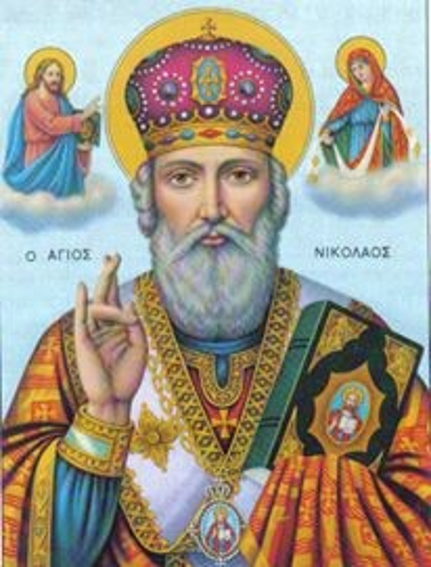
Byzantine Era
Constantine the Great established the Greek city of Byzantium as the second capital of the Roman Empire on May 11, 330 AD.
Byzantium was to become famous as Constantinople, the capital of the emerging Byzantine Empire.
The division of the Roman Empire into East and West accentuated Constantinople's independent development.
The people of the eastern realm regarded the ancient Greeks as their ancestors and while they became Roman citizens, they referred to themselves as Hellene or Graekos to preserve their ancient Hellenic heritage.
When Rome eventually fell to Germanic invaders, the Ostrogths in 476 AD, the Byzantine Empire became identified as "The Empire of the Greeks."
The official language was Greek and the most significant cultural feature that defined the Byzantine Empire was Orthodox Christianity which assumed preeminence over the Christian centers of the East.
All these developments led to a Byzantine, golden age where Greek literature, Byzantine art and architecture entered their most glorious period.
Ayia Sofia (Church of Holy Wisdom) built by the Eastern Orthodox, Emperor Justinian was opened on the 27th of December, 537 AD is one of the greatest surviving examples of Byzantine architecture and is considered as the eight wonder of the world.
And, it was from Constantinople that Greek literature and culture reached Western Europe that helped contribute to the advent of the Renaissance.
Helene - The First Christian Pilgrim to the Holy Land
Helene (c 249 - c 329), the mother of the Roman Emperor, Constantine the Great was born in Drepanon, Bithynia in Asia Minor to a humble Greek family.
This is the story of a common Greek girl who became Empress of the Roman Empire and a Saint (her son Constantine the Great is also venerated as a Saint) of the Orthodox Church.
The feast day of Saints Constantine and Helene is celebrated on May 21 of the Greek Orthodox Church.
She married Constantius I who was a Roman Emperor from 305 to 306 and founder of the Constantinian dynasty.
Helene was the first Christian pilgrim to the Holy Land.
She built churches on the sites of Christ’s Nativity (in Bethlehem) and Ascension (near Jerusalem) and is revered as the discoverer of the Cross upon which Jesus was Crucified.
Her son Constantine, renamed the city of Drepanon, in Asia Minor, his mother's birthplace, "Helenopolis" after her death around 330 to honor her.
Soon after, pilgrimages began to be made to the sites associated with Jesus Christ, the Saints and Christian martyrs, as well as to places where there have been apparitions of the Virgin Mary.
Holy Land pilgrimages include Jerusalem, Bethlehem, Nazareth, the River Jordan (site of Christ's Baptism), the Cave dwelling of John the Baptist, Galilee and the Sea of Galilee and Mount Tabor, the site of the Transfiguration of Jesus where Jesus began to Radiate Light and conversed with Moses and Elijah
Monasticism
An early monastic's life (a solitary person) was centered on all the things of God.
Monasticism is the ancient Christian practice of withdrawal from the world in order to dedicate one self fully to union with Jesus Christ.
The golden age of Orthodox, Christian monasticism, occurred during the Byzantine era (395 to 1453 AD) when it guided the course of theology, the veneration of icons and the piety and religious practices of the Byzantines.
In education they developed large libraries to spread the Orthodox Byzantine culture through copying manuscripts, creating art, educating people and working as missionaries.
Monastery in the Mountains
The Monastery of Saint Anthony, deep in the Red Sea Mountains is located about 334 km (208 mi) southeast of Cairo.
It was established by the followers of Saint Anthony (12 January 251 – 17 January 356),who was the first Christian monk from Egypt which supported a community of monks for almost 2,000 years.
Mount Athos
Mount Athos in Halkidiki, Macedonia in north-eastern Greece is the center of Eastern Orthodox monasticism that is completely dedicated to prayer and the worship of God.
Nearby, the ancient Greek city of Stageira, near the eastern coast of the peninsula of Halkidiki is the birth place of the ancient Greek philosopher, Aristotle, the founder of the Lyceum, the Peripatetic school of philosophy and the Aristotelian tradition.
Mount Athos is referred to in Greek as Ayion Oros (Ἅγιον Ὄρος, 'Holy Mountain'), which its Christian, monastic traditions date back to the Byzantine era.
Mount Athos consists of 20 monasteries and approximately 2,000 monks from Greece and many other countries, including Eastern Orthodox countries such as Romania, Moldova, Georgia, Bulgaria, Serbia and Russia, live an isolated life from the rest of the world.
Only men are permitted to enter the Mount Athos region.
Athonite tradition says that the Blessed Virgin Mary, accompanied by St John the Evangelist were sailing from Joppa to Cyprus to visit Lazarus when the ship was blown off course and was forced to anchor near the present monastery of Iviron.
The Virgin walked ashore and, overwhelmed by the wonderful and wild natural beauty of the mountain, she blessed it and prayed to her Son, Jesus Christ for it to be her garden.
A voice was heard saying, "Ἔστω ὁ τόπος οὗτος κλῆρος σὸς καὶ περιβόλαιον σὸν καὶ παράδεισος, ἔτι δὲ καὶ λιμὴν σωτήριος τῶν θελόντων σωθῆναι" ("Let this place be your inheritance and your garden, a paradise and a haven of salvation for those seeking to be saved").
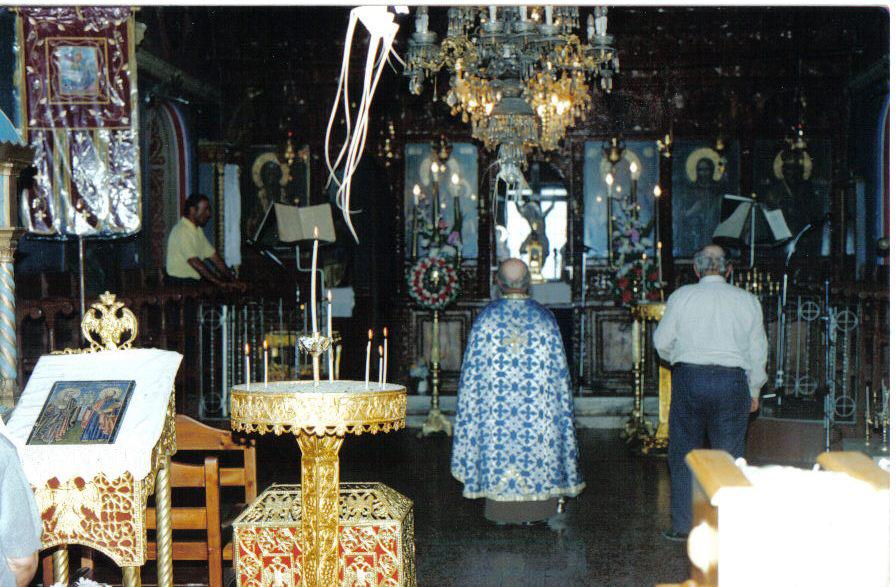
Islam
Islam was born in 610 AD through its founder, Muhammad.
By 632 AD, the Orthodox patriarchates of Antioch, Alexandria and Jerusalem were overrun and came under Muslim control.
On May 29, 1453, Constantinople, the Orthodox Christian capital of the Byzantine Empire was overwhelmingly besieged by the Muslim, Ottoman Turks from central Asia and the great Byzantine Empire ended.
Its conquest by the Ottomans is considered one of the great tragedies of Christendom.
In a bloody holocaust with the sword, Islam wiped out 80% of the Orthodox Christian centers the Apostles of Jesus had evangelized.
Since then, the Catholic church in Rome became the dominant force of Christianity.
The Catholic Church sent missionaries to evangelize in northern Europe as far north as Ireland and the New World (the Americas) during the Age of Exploration (Age of Discovery).
The Great Schism
The division of the Roman Empire into East and West also brought a complete religious schism dated on July 16, 1054 due to religious disagreements and political conflicts.
When Pope Leo IX died, French Cardinal, Humbert of Silva Candida entered Constantinople’s cathedral, Ayia Sophia and excommunicated the Patriarch of Constantinople, Michael Cerularius.
In turn the Patriarch excommunicated Cardinal Humbert which created the “Great Schism” of Christianity into two divisions - the Eastern Orthodox and the Catholic.
Martin Luther, a 16th-century monk and theologian brought Protestantism as the third major force within Christendom, alongside Roman Catholicism and Eastern Orthodoxy.
Ezine Articles Author Link
Click on the Link Below

Newsletter Opt-in-Form
The Keen Traveler
Recent Articles
-
The Power Within
Jan 07, 26 05:19 AM
The power within empowers you to shape your own life and goals that are aligned with your true self. -
When all we Have is God
Dec 20, 25 04:21 AM
When all we have is God in times of loss hardship or loneliness God's Presence offers refuge, strength and a purpose for the future. -
Beauty of Christmas
Dec 11, 25 04:22 AM
The beauty of Christmas is the celebration of the real Christmas Story with the Birth of Jesus Christ, the Son of God, Who came to bring love, hope, and salvation to the world.


